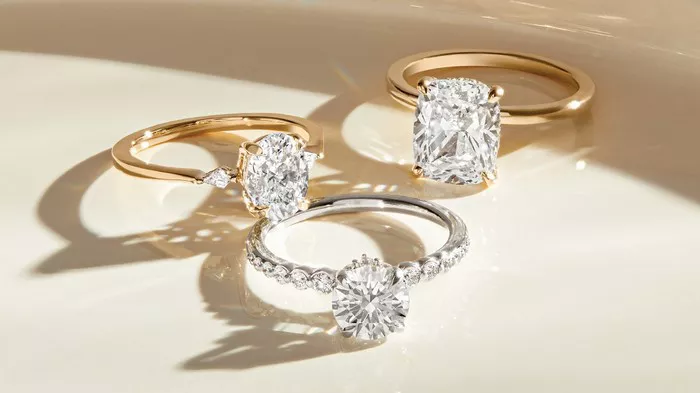In the realm of jewelry, authenticity holds paramount importance, especially when it comes to rings. Whether it’s an engagement ring, wedding band, or a cherished heirloom, discerning the authenticity of a ring involves understanding various factors such as materials, craftsmanship, and hallmarking. This comprehensive article delves into the intricate details and methods used to determine if a ring is real, providing insights into gemstones, precious metals, authentication processes, and practical tips for consumers. By equipping yourself with knowledge, you can confidently assess the authenticity of rings and make informed decisions when purchasing or evaluating jewelry.
Understanding Ring Authenticity
The authenticity of a ring refers to its genuineness in terms of materials, craftsmanship, and often, the presence of genuine gemstones. Authentic rings typically adhere to industry standards, exhibit quality craftsmanship, and are accompanied by certifications or hallmarking that verify their composition and value.
Materials Composition:
Precious Metals: Authentic rings made from precious metals such as gold, silver, platinum, and palladium have specific characteristics that distinguish them from imitation or lesser-quality alloys. These metals are valued for their durability, luster, and ability to retain their intrinsic value over time.
Gemstones: Rings featuring gemstones like diamonds, rubies, sapphires, emeralds, and others are evaluated based on their authenticity, cut, clarity, color, and carat weight. Genuine gemstones are natural or lab-grown and are valued for their rarity, brilliance, and optical properties.
Craftsmanship and Design:
Quality of Workmanship: Authentic rings exhibit superior craftsmanship, evident in precise settings, intricate detailing, and seamless finishes. Professional jewelers employ skilled techniques to ensure rings are not only aesthetically pleasing but also structurally sound and durable.
Design Consistency: Designs of authentic rings are often consistent with established styles, periods, or brands. Unique features, engraving, or hallmarking may further authenticate the origin and craftsmanship of the ring.
Certifications and Hallmarking:
Certifications: Rings may be accompanied by certifications from reputable gemological laboratories, verifying the authenticity and quality of gemstones, especially diamonds. Certifications provide assurance of the gemstone’s characteristics, such as color, clarity, and carat weight.
Hallmarks: Hallmarking on rings made from precious metals indicates purity and authenticity. These marks, often stamped inside the ring band, signify the metal’s fineness (e.g., 18K for 18 karat gold) and may include the maker’s mark or country of origin.
Determining Ring Authenticity: Practical Methods
Assessing the authenticity of a ring requires a combination of visual inspection, knowledge of materials, and sometimes, professional evaluation. Here are practical methods to determine if a ring is real:
Metal Identification:
Visual Inspection: Examine the ring for any signs of discoloration, tarnishing, or fading, which may indicate the presence of base metals or alloys. Genuine gold, for example, retains its characteristic color and luster over time.
Hallmark Verification: Locate and verify the hallmark stamped inside the ring band. Research hallmarking standards for different countries to understand what each mark signifies in terms of metal purity and authenticity.
Magnetic Test: Precious metals like gold and platinum are non-magnetic. Use a magnet to test if the ring exhibits magnetic properties, which would indicate the presence of ferromagnetic materials (not typical in genuine precious metals).
See Also: Can We Wear Diamond Ring Daily?
Gemstone Assessment:
Visual Inspection: Examine gemstones under adequate lighting to assess their color, clarity, and brilliance. Genuine gemstones typically display natural imperfections (inclusions) and unique optical properties that enhance their beauty.
Use of Loupe: Use a jeweler’s loupe (magnifying glass) to inspect gemstones for internal characteristics, such as inclusions or growth patterns, which are natural features found in authentic gemstones.
Certification Check: For rings featuring diamonds or other precious gemstones, request a certificate from a reputable gemological laboratory (e.g., GIA, AGS). Certificates provide detailed information on the gemstone’s quality and authenticity.
Professional Appraisal:
Consult a Jeweler: Seek assistance from a certified gemologist or professional jeweler for a thorough appraisal of the ring. Jewelers have access to specialized equipment and expertise to verify the authenticity of metals and gemstones.
Appraisal Documentation: Obtain an official written appraisal that details the ring’s specifications, including metal composition, gemstone characteristics, and estimated value based on current market trends.
Tips for Authentic Ring Purchasing
When purchasing rings, especially high-value or sentimental pieces, consider the following tips to ensure authenticity and value:
Buy from Reputable Sources: Purchase rings from established jewelers, reputable online retailers, or certified dealers who guarantee the authenticity of their products.
Request Documentation: Obtain certificates of authenticity, warranties, or appraisals for rings featuring precious metals and gemstones. Documentation provides assurance of quality and serves as proof of purchase.
Research and Compare: Research market prices, quality standards, and consumer reviews before making a purchase. Compare similar rings based on materials, craftsmanship, and pricing to make an informed decision.
Inspect Before Purchase: Conduct thorough inspections of the ring’s condition, markings, and gemstones before finalizing the purchase. Ensure the ring meets your expectations in terms of authenticity, design, and overall quality.
Caring for Authentic Rings
To maintain the authenticity and beauty of rings:
Regular Cleaning: Clean rings regularly using mild soap, warm water, and a soft brush to remove dirt and oils that can dull their appearance.
Safe Storage: Store rings in a jewelry box or pouch to prevent scratching, tangling, or exposure to harsh chemicals or moisture.
Periodic Maintenance: Schedule periodic inspections and maintenance with a jeweler to check for loose settings, worn prongs, or signs of damage that could affect the ring’s integrity.
Conclusion
Determining if a ring is real involves careful examination of its materials, craftsmanship, and accompanying documentation. Authentic rings made from precious metals and gemstones exhibit distinct characteristics that differentiate them from imitations or lesser-quality alternatives. By familiarizing yourself with hallmarking, gemstone grading, and professional appraisal methods, you can confidently assess the authenticity of rings and make informed decisions when purchasing or evaluating jewelry. Whether acquiring an engagement ring, heirloom piece, or symbolic accessory, understanding ring authenticity enhances your appreciation for its craftsmanship, value, and significance in your jewelry collection.

